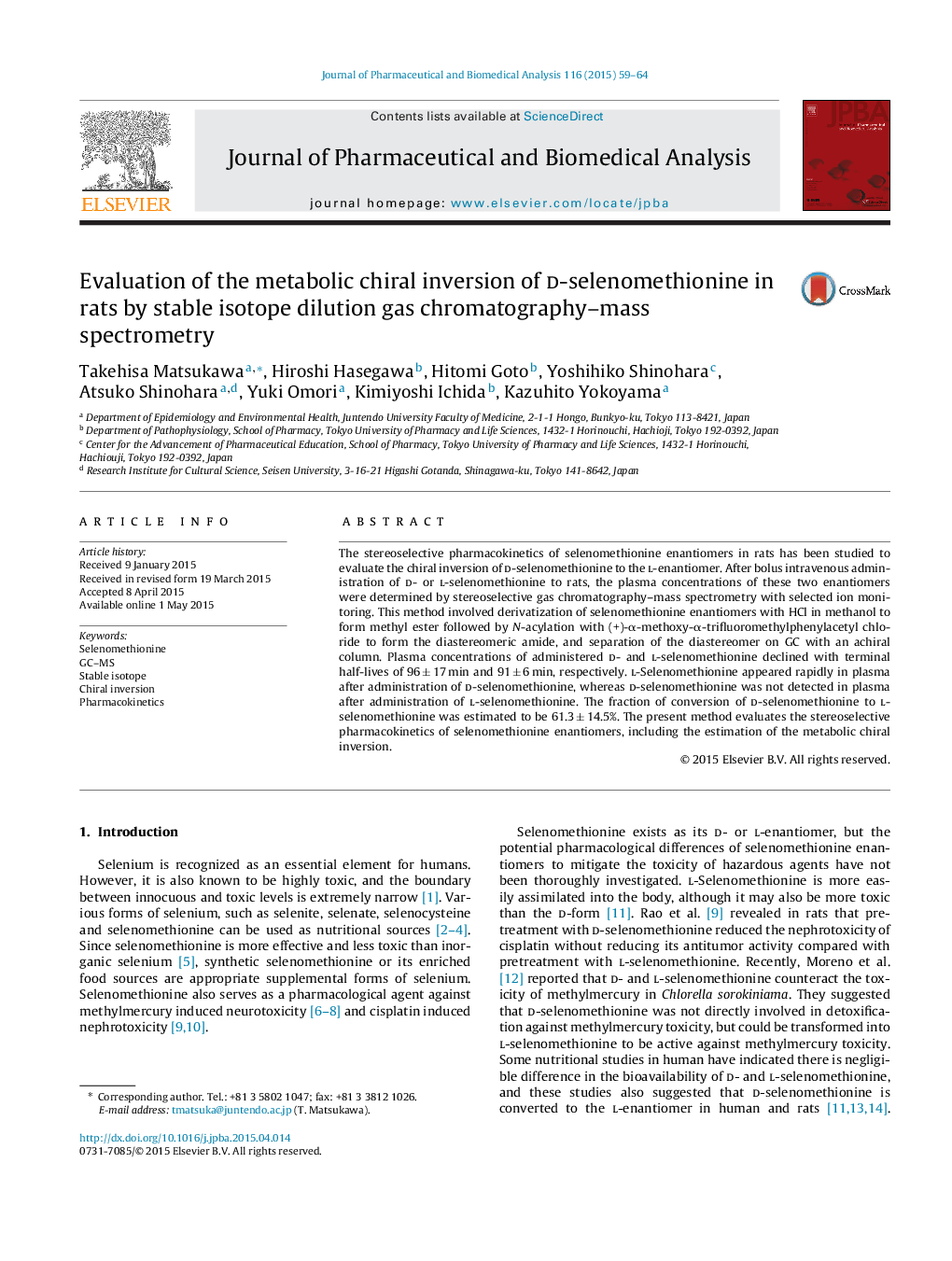| Article ID | Journal | Published Year | Pages | File Type |
|---|---|---|---|---|
| 1220475 | Journal of Pharmaceutical and Biomedical Analysis | 2015 | 6 Pages |
•We have evaluated the kinetics of selenomethionine enantiomers by stable isotope dilution GC–MS.•d-Selenomethionine was stereoselectively converted to its l-enantiomer in rats.•The fraction of conversion of d-selenomethionine to the l-enantiomer was estimated to be 61.3%.
The stereoselective pharmacokinetics of selenomethionine enantiomers in rats has been studied to evaluate the chiral inversion of d-selenomethionine to the l-enantiomer. After bolus intravenous administration of d- or l-selenomethionine to rats, the plasma concentrations of these two enantiomers were determined by stereoselective gas chromatography–mass spectrometry with selected ion monitoring. This method involved derivatization of selenomethionine enantiomers with HCl in methanol to form methyl ester followed by N-acylation with (+)-α-methoxy-α-trifluoromethylphenylacetyl chloride to form the diastereomeric amide, and separation of the diastereomer on GC with an achiral column. Plasma concentrations of administered d- and l-selenomethionine declined with terminal half-lives of 96 ± 17 min and 91 ± 6 min, respectively. l-Selenomethionine appeared rapidly in plasma after administration of d-selenomethionine, whereas d-selenomethionine was not detected in plasma after administration of l-selenomethionine. The fraction of conversion of d-selenomethionine to l-selenomethionine was estimated to be 61.3 ± 14.5%. The present method evaluates the stereoselective pharmacokinetics of selenomethionine enantiomers, including the estimation of the metabolic chiral inversion.
Graphical abstractFigure optionsDownload full-size imageDownload as PowerPoint slide
